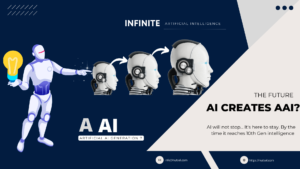Artificial in nature, human-engineered cells can give a new turn to the “human race”. Cells, as we know, are the basic building blocks of a living organism. And, scientists are now using stem cells to create human cells with biological components. Equipped with proper tech, these biological entities could evolve into human-like beings.
Natural human cells serve as the body’s building blocks, absorb nutrients from meals, transform those nutrients into energy, and perform certain functions. The problem is that our complex human body consists of 37.2 trillion cells. So, it is almost impossible to mimic that exact structure. However, it is not mandatory to imitate the human body. An artificial being could exist and live well with ten complex cells made for them.
To create such a complex entity, many new technologies and methods ask being explored and discovered. Engineers are always exploring different ways to use stem cells in their experiments. In 2008, for example, British researchers claimed that they had created embryos and stem cells using human cells and the egg cells of cows, but said such experiments would not lead to hybrid human-animal babies or even direct medical therapies.
Another example of human-animal hybrid embryos is the “Human-Pig Hybrid,” a contentious move that many expect to be the first step toward creating artificial humans.
In another work, published on Cell.com, scientists claimed that they had successfully grown monkey embryos containing human cells for the first time — the latest milestone in a rapidly advancing field that has drawn ethical questions. The team injected monkey embryos with human stem cells and watched them develop.
However, the scientific community has always been divided on the issue.
Like all the other scientific breakthroughs and technology, we must first be careful about the consequences of this movement, as it can turn “revolutionary.” The main debate is on whether or not this technique should be used to produce real people.
Despite any ethical and other controversies, scientists are continuing with research to create lives. A recent study, published in the journal Cell Stem Cell by Professor Vincent Pasque and his colleagues at KU Leuven, used stem cells to create new human cells in the lab, possibly marking the beginning of making artificial humans.
The new cells resemble their natural counterparts in early human embryos very closely. As a result, scientists are now better able to understand what happens right after an embryo implants in the womb.
If everything goes according to plan, a human embryo implants in the womb seven days after fertilization. At that point, the embryo is no longer available for study due to ethical and technological limitations. To study human development in a dish, scientists have already developed stem cell models for various embryonic and extraembryonic cell types.
Extraembryonic mesoderm cells are a specific type of human embryonic cell, and Vincent Pasque’s team at KU Leuven has developed the first model for such cells. According to Professor Pasque, these cells generate the first blood in an embryo, help to attach the embryo to the future placenta and play a role in forming the primitive umbilical cord.
In humans, this type of cell appears at an earlier developmental stage than in mouse embryos, and there might be other important differences between species. “That makes our model especially important: research in mice may not give us answers that also apply to humans,” said Pasque.
The scientists used human stem cells, which can still grow into every type of cell in an embryo, to make the model cells. The new cells are an excellent model for that cell type since they closely resemble their natural counterparts in human embryos. Pasque expressed hope that the new model would also help to clarify medical issues such as issues with fertility, miscarriages, and developmental disorders.
“You don’t make a new human cell type every day,” Pasque said, and also asserted that they are very excited because now they can study processes that normally remain inaccessible during development. “The model has already enabled us to find out where extraembryonic mesoderm cells come from,” continued Pasque.
The birth of a new human life would be something incredible. As humans, we are genetically complex beings and can be defined by many traits, millions of DNA base pairs, and all that goes with them. As mentioned earlier, an artificial being would not necessarily mimic our body, brain structure, traits, etc. even if it started from a human embryo. Creating something artificial that is similar in terms of abilities in volume but not in shape sounds unreal.
Keeping in mind all these possible changes in the human race, wouldn’t it be more important to discuss the possibilities before they actually turn into realities?
The idea of creating an artificial human race is not new; it has been debated for a while.
In 2019, for example, scientists developed a new type of life, and this achievement marks a major shift in the science of synthetic biology.
Earlier this year in July, researchers developed a nano-robot made solely of DNA to study biological processes. You could be pardoned for thinking it was science fiction. But it is the focus of significant research conducted at the Structural Biology Center in Montpellier by professionals from Inserm, CNRS, and Université de Montpellier. This extremely cutting-edge “nano-robot” could make it possible to analyze mechanical forces at microscopic scales in greater detail, which are vital for many biological and pathological processes.
Speaking about the latest research published in the journal Cell Stem Cell by Professor Vincent Pasque and his colleagues at KU Leuven, the new model cells aid in the study of early embryonic development. Furthermore, this study moves the field of stem cell research forward as researchers are now able to study processes that typically remain inaccessible during development.
Pasque’s team has demonstrated that it is possible to create a new variety of human cells in the laboratory. The development process will likely lead the research to first create artificial human organs and then gradually an artificial human body. It is unlikely that creating a new human cell will be limited to assisting us in dealing with medical challenges.
- AI-Powered PCs: Overhyped Trend or Emerging Reality? - August 21, 2024
- Princeton’s AI revolutionizes fusion reactor performance - August 7, 2024
- Large language models could revolutionize finance sector within two years - March 27, 2024



